With eyes wide open: Aerial electronic warfare. Part of 4
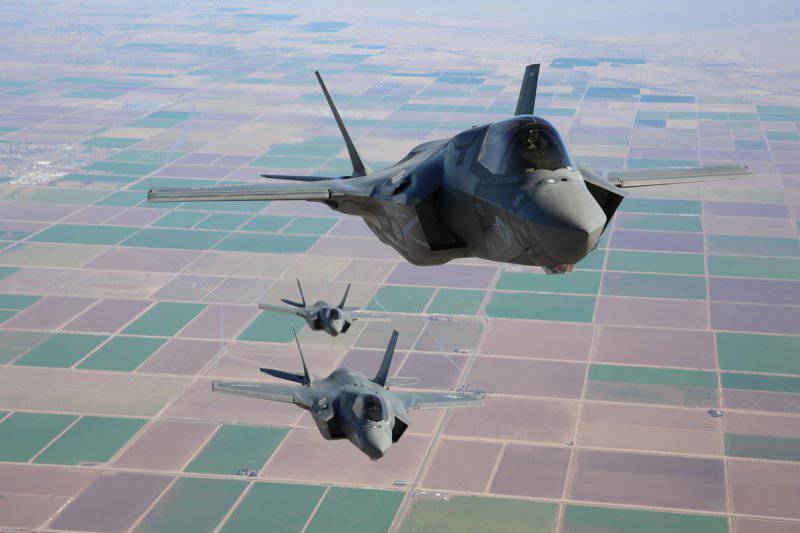
According to some data, a significant part of the configuration of the PTP AN / ALR-94 complex from BAE System, which is mounted on the F-22A Raptor fighter, was transferred to the AN / ASQ-239 system
Regarding the capabilities of EW fighters, the AN / ASQ-239 system from BAE Systems is undoubtedly one of the most advanced EW air systems. This system is installed on F-35A / B / C Lightning-II fighters, and at the end of 2016, the company announced the delivery of the X / NUMX AN / ASQ-250 system for this aircraft. Steve Moret, CTO of BAE Systems, said that the production rate of the AN / ASQ-239 system is growing, “they started with 239 systems per month in 4 and ended up with 2016 systems per month by 11 year”. There is little information in the public access about the characteristics of this complex, perhaps with the exception that it has a circular viewing area, issuing real-time warnings about the attack of missiles with radar, infrared and possibly laser-guided. The company BAE Systems also noted that the AN / ASQ-2019 system includes an automatic dropping of dipole reflectors and false thermal targets along with the controller, as well as equipment and radio intelligence (RTR). According to some data, a significant part of the configuration of the PTP AN / ALR-239 complex from BAE System, which is mounted on the F-94A Raptor fighter, was transferred to the AN / ASQ-22 system.
The United States continues to upgrade its EW systems for a significant part of its military fleet. In November, 2016, the company Boeing received a contract worth 478 million dollars for the development and preparation for the production of electronic warfare systems Eagle Passive / Active Warning and Sustainment System (EPAWSS) for the US Air Force. This phase should end in 2020. The EPAWSS system is designed to enhance the capabilities of EW fighters F-15C and F-15E Eagle / Strike Eagle, which the US has left in working condition 431 machine. Boeing has given BAE Systems a mission to develop a digital EPAWSS that will increase the aircraft’s ability to detect radio frequency threats and drop dipole reflectors and false heat targets to combat radar and infrared-guided missiles of the surface-air and air-to-air classes. Moret from BAE Systems noted that “the modernization of the fourth-generation fighter remains a high priority for us ... as demonstrated by the work on the F-15. The company's philosophy is to take the capabilities of the fifth generation EW and apply them on the fourth-generation aircraft in order to preserve its combat effectiveness and relevance, since their lifespan is planned to be extended further 2030 year.
In recent years, the US Air Force Command has repeatedly stated that the combination of the F-15C / E and F-22A fighter jets will remain the basis of the air superiority doctrine until the development of the so-called Penetrating Counter-Air (PCA) doctrine. According to the Air Force Command, the result of the development of the PCA doctrine should be the appearance of a sixth generation fighter, which can be adopted in the 2040-2050 years. As expected, the F-15C / E EPAWSS system will replace the existing AN / ALR-56C radar warning system receiver from BAE Systems, the Northrop Grumman AN / ALQ-135 (V) radar jammer and the warning system on the use of EW equipment AN / ALQ-128 from Raytheon, currently providing electronic protection for F-15C / E fighters. According to Moret, the EPAWSS system will be installed on all airplanes in the next five years; The first EPAWSS system was sent to Boeing at the end of last year to be installed on the first fighter of the F-15 family. Moree further noted that in addition to the EPAWSS installation program for US Air Force planes, the company is engaged in the electronic protection of F-15 aircraft of other operators. “The Digital Electronic Warfare System (DEWS) program is in accordance with the law on the sale weapons and military equipment to foreign countries is aimed at upgrading F-15 fighters to foreign buyers. BAE Systems currently supplies the DEWS system to an unnamed foreign customer and is seeking other buyers for this system. The first customer passed us his first aircraft to install this system at the end of 2016 of the year. ” The capacity of the companies is sufficient for the release of the DEWS system and the installation of the next potential customer on the F-15 fighter jets.
Additional support for electronic warfare is offered for the American military aviation in the form of the expendable director of interference / false targets EW ADM-160C MALD-J (Miniature Air-Launched Decoy-Jammer) developed by Raytheon, which is designed to protect aircraft from radio frequency threats. In November 2016, the manufacturer of miniature missiles REB ADM-160C received a contract worth 76 million for the supply of ADM-160C systems and equipment to the US Air Force, the supply of which should be completed by 2020. Meanwhile, the ADM-160C missiles are being upgraded with the Global Positioning System Aided Inertial Navigation System-II (GAINS-II). The upgrade of GAINS-II, according to the company, provides two advantages: improving the navigation capabilities of the ADM-160C and ensuring the stable operation of the ADM-160C in the conditions of jamming of the GPS signal. The company said that all ADM-160C systems that are currently manufactured and supplied by the US Air Force are equipped with the GAINS-II subsystem, which can also be integrated into existing ADM-160C missiles. At the same time, the company is not aware of any separate air force program to refine existing systems.
ADM-160C jammer / decoder
The ADM-160C rocket is qualified to be mounted aboard an F-16C / D fighter, which can carry four such systems, and a Boeing B-52H Stratofortress strategic bomber, which can accommodate up to 16 systems. To this end, the company cooperates with the US Navy to verify the ability of the ADM-160C to be deployed onboard the F / A-18E / F Super Hornet carrier-based fighter jets. The “active element” of this rocket is the Signature Augmentation System (SAS) from Northrop Grumman. The SAS system of imitation radar signatures, microwave, VHF and microwave frequencies realistically simulates almost any subsonic aircraft, from F-117 to B-52. The MALD-J rocket with the SAS system, while remaining on board the aircraft, allows the crew to choose between the tactics of jamming or diverting REB assets, or can be reset with SAS only to jam interference with the aim of blinding enemy radar noise.
Raytheon also supports operations fleet in airborne electronic warfare, having developed its Next Generation Jammer (NGJ) jammer, designed to equip the EA-18G Growler electronic warfare aircraft. The NGJ includes an active phased array antenna. The system can perform several different tasks at the same time, while the open NGJ architecture makes it easy to upgrade in the future. The NGJ will replace the Exelis / Harris AN / ALQ-99E tactical jamming systems currently installed on EA-18G aircraft. The company is actively promoting its NGJ initiative program, and its representative said that "after receiving a development contract from the fleet in 2016, we worked a lot and hope to begin supplying the first US Navy systems in 2021."
Also, the US military pays a lot of attention to improving the capabilities of its drones. The US Army has issued a requirement for the Multifunction Electronic Warfare (MFEW) multifunctional electronic warfare system, which, according to open sources, will be integrated into the General Atomics MQ-1C Gray Eagle UAVs it operates. Most likely, the MFEW complex will come in the form of a container installed under the wing. The so-called “Milestone-B” checkpoint, when the army decides to start the technology development and risk mitigation phase for the MFEW complex for the MQ-1C drone, is expected this year.
The US Marine Corps is not far behind, also seeking to increase its EW capabilities. In this regard, he focused on the AN / ALQ-231 Intrepid Tiger-II container. This container was developed as a platform independent system capable of performing several EW functions. The system is already installed on board several types of aircraft operated by the Corps, including the AV-8B Harrier attack planes and F / A-18C / D fighters. The newest version of the AN / ALQ-231 (V) 3 system was first deployed on UH-1Y Venom light helicopters in the middle of 2016. In the future, the AN / ALQ-231 container will be migrated to other Aircraft Cases: AN-1Z Cobra attack helicopters, Sikorsky CH-53K King Stallion heavy transport helicopters, as well as KC-130J tankers and MV-22B Osprey converters. In accordance with the plans, the RQ-21 Blackjack drones will also receive the AN / ALQ-231 system. The AN / ALQ-231 family includes several systems, each of which is designed for its own aircraft; they can either interfere with radars or communication exchanges. The development of AN / ALQ-231 began in the 2008 year, when the Corps issued an operational requirement regarding the EW development plan of its operational grouping up to the 2020 year. It identifies the capabilities of the Corps in this area before the decommissioning of EW EA-6В Prowler aircraft, which are still in service, while the US Navy wrote off these aircraft in 2015 year. Although the AN / ALQ-231 system is currently configured to silence the radio, work is underway to expand its functionality and enable the AN / ALQ-231 Intrepid Tiger-II Block-X radar jamming function, which began in 2016 and allocated funds in the defense budget.
Aircraft EW EA-18G US fleet in the future will be equipped with a system of jamming the next generation NGJ development company Raytheon, which according to the plans should be adopted before the end of 2021 year
The demand for airborne electronic protection systems for military aircraft shows no signs of decline. As already noted in a series of articles, the electromagnetic environment is becoming more and more overloaded. In addition, modern ground-to-air missiles, for example, from the Russian C-400 Triumph missile system, pose a real threat to the United States and its allies around the world. In open sources, it is noted that the C-400 battalion set costs about 200 million dollars, and it consists of 8 transport-launchers with 32 missiles, a radar complex and a command center. The rocket with semi-active / active guidance 40H6 of this complex has a range of up to 400 km. Thus, the C-400 complex is a system to prohibit access / blocking of the zone, suitable for those customers who either do not have enough money or do not have the opportunity to buy modern generation fighter 4 + or 5. It is not surprising that potential adversaries of the United States, Russia and China, have acquired these systems and several other countries are next in line, including Iran. As noted in the 2015 Century Military Operations in a Difficult Electromagnetic Environment publication in 21, the Scientific Council on Defense Affairs advising the US Department of Defense on scientific and technical issues, “Owing to the widespread use of modern and high-performance electronics around the world and its growing availability with limited resources, they can seriously complicate the electromagnetic environment for the US military. ”
American fighters F-22A in the future will be able to benefit from current research DARPA, conducted under the ARC program
Outside Borders
The importance of airborne electronic warfare will only increase in the future, as indicated by the continuously growing demand for military and commercial radio frequency equipment.
Raytheon, head of EW systems at the company, stated that “Without a doubt, the importance of electronic warfare is growing, particularly in connection with the proliferation of commercial technologies. The need for EW air systems and capabilities exists where there is a threat of air-to-air and ground-to-air missiles. Meanwhile, we should not forget about the important role of radio intelligence in ground support operations (see Part 1). “The threat is always a stimulus. It develops rapidly and becomes more and more dynamic as the adversary uses commercial technology. As the threat develops, the need for EW airborne equipment will grow. ” “In parallel, the development processes of threats and obsolescence of EW air systems are forcing customers to look for new and modernized electronic warfare capabilities,” said BAE Systems technical director Steve Moret, noting that most countries in the world are seeking to reduce their defense spending.
Working for the future, the Advanced Defense Research Department (DARPA), which is developing new technologies in the interests of the US Department of Defense, hopes to integrate the technology developed by BAE Systems for the DARPA program, called the Adaptive Radar Countermeasures ARC (Adaptive Radar Countermeasure) into existing and future combat aircraft US Air Force. The ARC program was launched in 2012, and BAE Systems joined in the following year. According to DARPA, the goal of the ARC program is to “automatically generate effective countermeasures against new, unknown, and self-adjusting radars (ground and air) in real time in real conditions.” In this regard, the ARC architecture is designed to “Isolate unknown radio signals in the presence of other signals - the enemy, their forces or neutral. Determine the parameters of the threat posed by the radar. Synthesizing and transmitting interfering signals in order to achieve the desired impact on the enemy radar. Evaluating the effectiveness of countermeasures based on the observed changes in the work of the threat ". The ARC architecture should allow next-generation radar warning receivers to detect radar signals transmitted by systems that use complex and fast-tunable waveforms and frequency tuning techniques in order to reduce their likelihood of detection and interception. With outdated analog radars everything was much simpler, because they traditionally used fixed frequencies and, as a result, were easily detectable.
In November, 2016, the company BAE Systems received from DARPA a contract for the third phase of the program worth 3 million dollars. At the second stage, also headed by BAE Systems, the capabilities of the ARC architecture to determine the characteristics of radar signals and configure response signals to neutralize such threats were demonstrated. At the third stage, the development of algorithms for the ARC system and work on the transfer of the ARC architecture to US Air Force planes will be completed. According to a confidential source, the introduction of such technology is likely to be carried out on platforms such as the F-35A Lightning-II and F-22A Raptor fighters, as well as on promising platforms, such as the B-21 Raider strategic bomber.
It is obvious that the developers of electronic warfare have to solve more and more complex technical problems, because the systems that oppose them are constantly evolving. As can be seen from the series of articles, specialists in air RTR and EW deal with the radio frequency spectrum, which has unprecedented density in many parts of the world. According to Professor David Stapples from the University of London, one of the most difficult tasks today is the task of isolating signals of interest from the general radio frequency spectrum. RTR and EW systems that are already on board the aircraft, which "have enormous signal processing powers, which allow analyzing signals and making decisions in real time, can help this." According to Guy Alon, head of EW in the ELTA Systems division of Israel Aerospace Industries, “The traditional way of collecting RTR data in the past was at the platform level, that is, it was a combination of data from the same platforms. Today you can collect RTR data from a variety of platforms, aerial in our case, the main task of which may not be the maintenance of RTR, and integrate them into a single center of RTR. which will ensure their greater accessibility and greater reliability. " From a technical point of view, the basis of the IAI philosophy is the use of a modular approach in the design and development of RTR systems. It focuses on “using the same technological basis, which can scale to the platform on which the EW system is placed, be it a wide-body aircraft or a small-sized drone, so all of them can take part in the formation of a common operational picture”.
Information Management
Stapples continued, noting that when conducting combat operations or performing daily tasks in peacetime, all this RTR information should be gathered together to provide a reliable electronic picture of the recognized objects of the Recognized Electronic Picture (REP) of the radio frequency spectrum in real time. Alon agreed with him, adding that "our customers would like all RTR data to be sent to one place, for example, an operations control center, so that they can be studied in real time." In operational theaters, a similar REP will need to be distributed between aircraft, however, the problem of the available transmission bandwidth will remain paramount. For example, the standard NATO tactical link (TKS) Link-16 provides data and voice messages encrypted in the frequency range from 969 MHz to 1.2 GHz, and has a width sufficient to transmit data at speeds from 2.4 kbit / s to 16 kbit / s with. Link-16, being the main TKS in NATO air operations, should remain as a standard TKS for at least another ten years, or maybe longer than this period. Due to the fact that such TKSs may not be enough to distribute the REP in real time, one of the ways to solve the bandwidth deficit could be to download the current version of REP to the aircraft computer on the ground before performing the flight task. In this case, instead of using TKS, it would be enough to update this picture during any changes during the flight.
Market
Many companies operating in the field of EW are confident in the market, predicting that the demand for their products will only grow. As stated in a statement by Elettronica, "We believe that global demand for EW equipment will grow slowly over the next decade and reach 20 billion dollars by the year 2027." Steve Mores from BAE Systems said that “The global market for EW systems feels better than ever, industry experts predict its growth at a rate of three percent in the next few years.” Dave Appleby at Leonardo noted that "The EW air systems market is growing, as governments and ministries of defense seek to protect their military against modern threats with radar guidance systems."
Appleby believes that the growth of the market is fueled by the changing nature of the threats faced by the air forces of the whole world. “During asymmetric conflicts in Iraq and Afghanistan, the operation of EW air systems was limited to protection against low-tech threats with thermal homing, such as for example, MANPADS missiles. Current and future conflicts are more likely to also include advanced radar-guided threats, and this need is currently activating the market. ” Elettronica, in the meantime, is confident that “In modern warfare, there is a greater emphasis on information superiority and situational awareness. Most likely, this will be the main factor stimulating investment in this sector. ” The company argues that 36 percent growth in the coming decade is a really achievable figure. Nevertheless, a reduction in the defense budgets of developing countries may hold back the growth of the market, although of course trends will determine demand in North America, Europe and the Asia-Pacific region.
Articles from this series:
With eyes wide open: Aerial electronic warfare. Part of 1
With eyes wide open: Aerial electronic warfare. Part of 2
With eyes wide open: Aerial electronic warfare. Part of 3
Materials used:
www.shephardmedia.com
www.boeing.com
www.baesystems.com
www.lockheedmartin.com
www.leonardocompany.com
www.saabgroup.com
www.raytheon.com
www.marines.mil
www.iai.co.il
www.flightradar24.com
www.defense.gov
www.airforce.com
ukroboronprom.com.ua
www.darpa.mil
www.almaz-antey.ru
airwar.ru
www.wikipedia.org
en.wikipedia.org
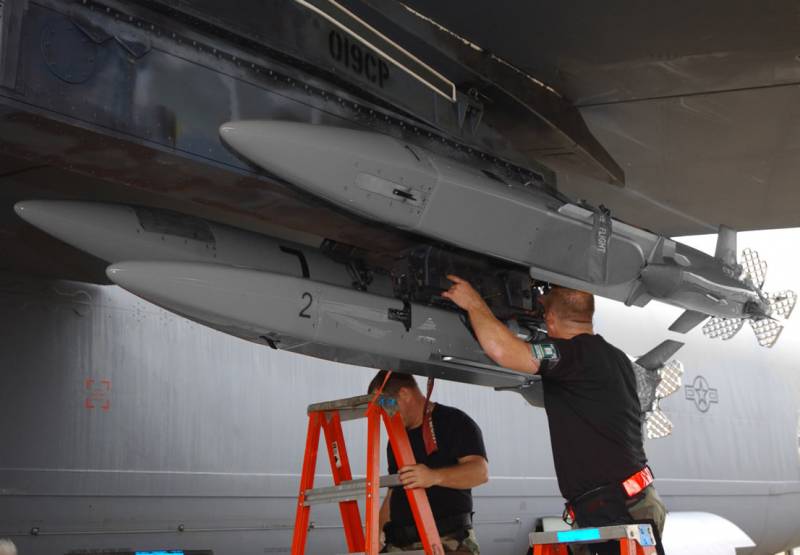
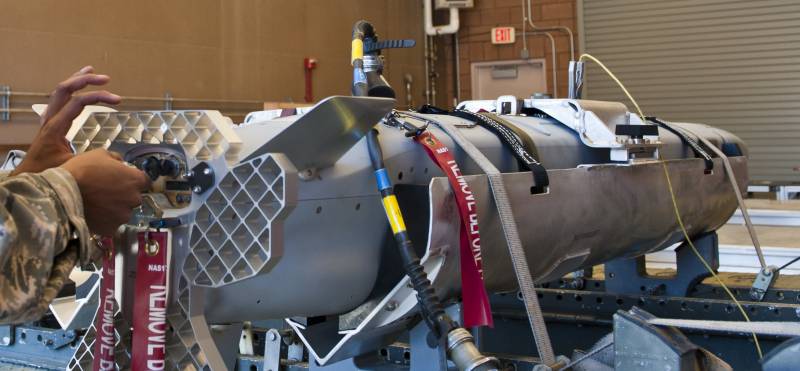
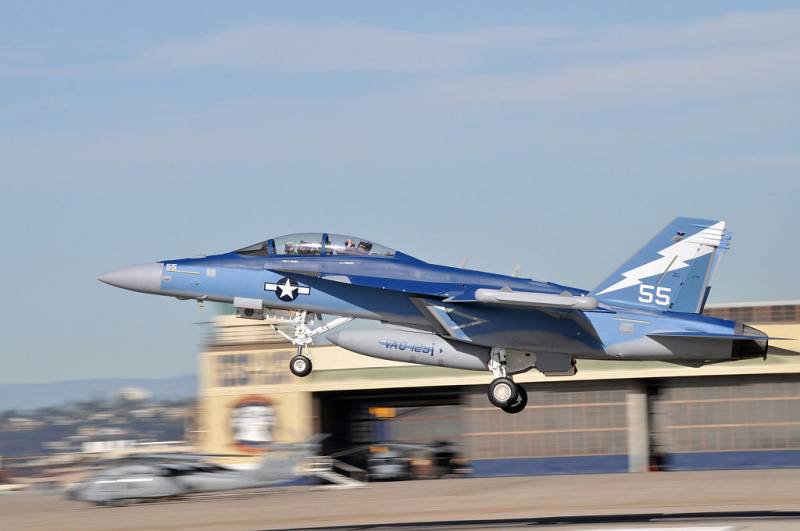
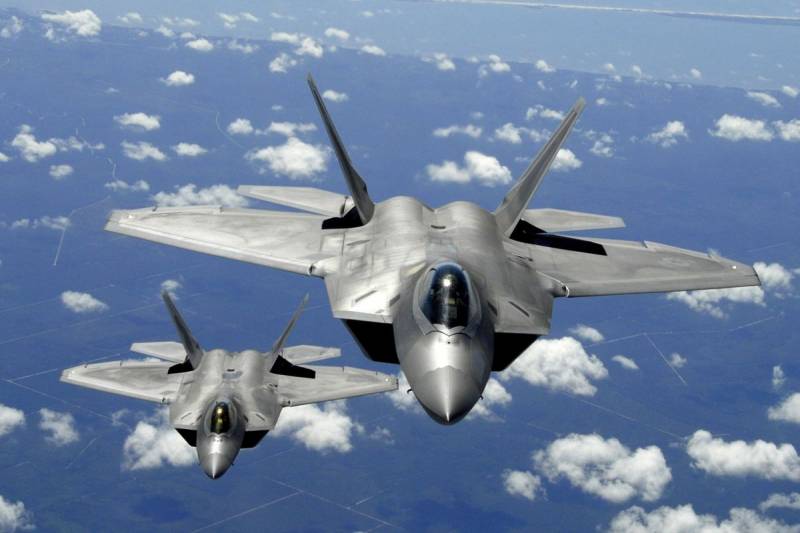
Information